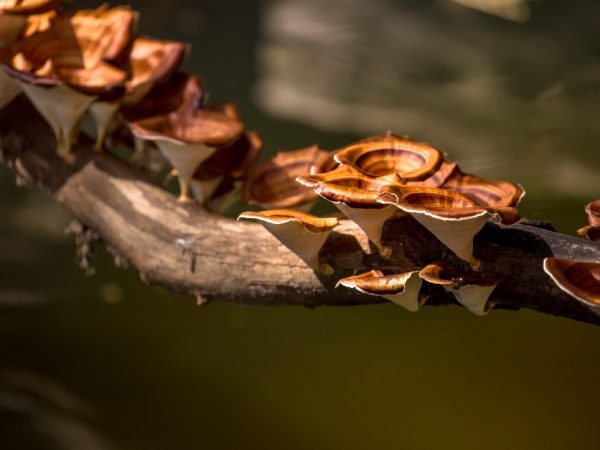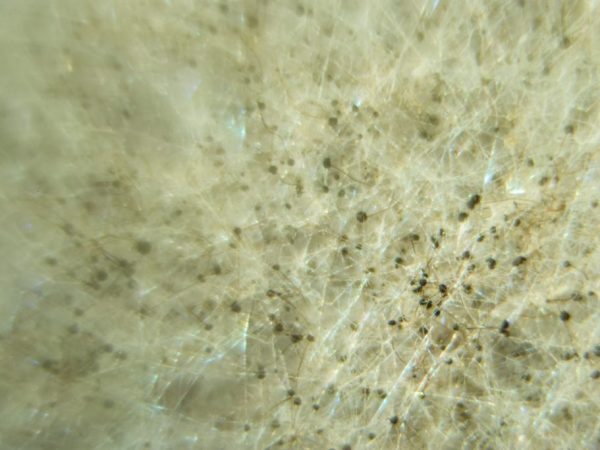Nutritional features of mushrooms
Nutrition of fungi is heterotrophic. This is a complex process that combines the mechanisms inherent in animals and plants. It is unique, these organisms represent a separate kingdom with their own characteristics. Some species get everything they need from a dead substrate, while others parasitize on living things.

Nutritional features of mushrooms
Meals
In nature, there are 2 main ways of feeding - heterotrophic and autotrophic. What is the difference between them? All animals, many bacteria and fungi are heterotrophs. These organisms are unable to synthesize organic substances from inorganic ones. They must receive the necessary connections from the external environment.
Autotrophs are plants and part of bacteria. In their cells there are special green plastids - chloroplasts. They contain a green substance - chlorophyll. It catalyzes a reaction after which carbon dioxide, nitrogen and water, under the influence of light energy, are able to transform into complex organic compounds.
Thus, the plants themselves provide themselves with the building and energy material, due to which they grow. From the external environment, they receive only water, oxygen and minerals.
Fungi are called heterotrophs, they are not able to independently synthesize organic substances from inorganic ones. In this they are similar to animals. The second point that brings this kingdom closer to the fauna is the ability to secrete enzymes to break down complex compounds. Only in animals this process takes place inside the body, and in fungi - in the external environment.
These organisms also have something in common with the plant kingdom. They are brought together by the way they absorb nutrients. It passes by being absorbed from the substrate through the cell wall. In the highest representatives of the kingdom, this happens through a special organ - the mycelium. But they do not have chlorophyll, which means that the reaction of photosynthesis is impossible.
Food method
For the normal functioning of any living organism, proteins (proteins), carbohydrates and fats (lipids) are needed. Proteins are synthesized in cells from amino acids supplied to heterotrophs from the external environment. Fats are part of the cell walls and become an energy reserve in case of carbohydrate deficiency. Complex carbohydrates are derived from glucose and are energy materials. In plants, complex carbohydrates are synthesized from simple carbohydrates - starch and fiber. In animals, they turn into glycogen, here in fungi they are completely similar to fauna, and glycogen is also present in their bodies.
To get all these substances from the external environment, they must first decompose more complex compounds into simple ones. Indeed, neither peptides, nor starch, nor fiber enter the cell. For this, organisms release enzymes into the external environment. Some representatives of the kingdom, for example, yeast, do not have enzymes. Therefore, they live on a specific substrate of simple carbohydrates that penetrates the cell walls.
Complex multicellular higher fungi synthesize enzymes in the mycelium, and some species in the fruit bodies.Each variety has its own characteristics. Some produce enzymes that can dissolve a large number of substances. Others have only specific ones, for example, they only break down keratin. It depends on what medium they will grow on.
The body of multicellular species consists of special filaments - hyphae. It is through their cells that nutrients are absorbed. It is also where the synthesis of proteins takes place, the conversion of glucose into glycogen, simple lipids into complex fats. Hyphae are fixed on the substrate. Depending on what kind of environment and method of nutrition mushrooms choose, they are divided into:
- saprophytes or saprotrophs;
- parasites;
- symbiotics or symbionts.
Most of the representatives of the kingdom belong to saprophytes, which settle on decaying remains. But there are thousands of parasitic species. Some have chosen a special way of interacting with other organisms - mutually beneficial symbiosis. Such mushrooms do not feed only at the expense of another organism, but help it to receive chemical elements from the external environment. This is their main difference from parasites.
Saprophytic mushrooms

Mold fungi settle on any surface
Nutritional methods for saprophytic mushrooms are classic. According to many scientists, they are primary in relation to any other type characteristic of most representatives of this kingdom. Such organisms settle on a certain dead substrate - soil, tree stumps, half-decayed fruits, products, animal corpses. The hyphae penetrate this substrate and begin to secrete enzymes and absorb nutrients.
Saprotrophs play an important role in nature. Mushrooms feed on dead organisms and decompose them. This releases the ash elements available for absorption by plants. Autotrophs synthesize complex organics from simple minerals, which are necessary for heterotrophs to maintain the life cycle of all living things.
Most saprophytes live in the ground. They are microscopic and macroscopic. In the group of macroscopic saprophytes, the most common representatives are caps and molds. Everyone knows hat species, they grow in forests and meadows, are edible and inedible. They live on old wood, take part in the decomposition of fallen needles and leaves. They feed on the decay products of organic substances.
Moldy varieties inhabit any medium, including homemade foods. It is also dead matter that becomes their nutrient substrate. This is one of the most numerous groups that inhabit all corners of the planet. Mold fungi eat, decomposing coarse organic matter into simpler ones, then bacteria are connected to the process.
Parasitic fungi
The parasitic lifestyle and nutrition of fungi is secondary, but quite common. In the process of evolution, some species chose an environment in which they had fewer competitors. They live on living organisms and feed on the products of their vital activity, or as food they use the bodies of the host organisms themselves. For example, they kill part of the tissue with the help of enzymes, then use the resulting semi-decomposed substances.
All varieties of this group are conventionally divided into:
- Plant pests (ergot, late blight, gray rot).
- Pests of invertebrates (parasites on ants, bees, crustaceans).
- Vertebrate pests (parasites on amphibians, reptiles, birds, mammals)
- Human parasites (most often it is a yeast of the genus Candida).
Many parasites have strict specificity, affecting only one species of plants or animals. In addition to them, the group of parasites includes those that have a wider range of hosts. If the fungus does not live outside a foreign organism and this is its only way of feeding, then it is called an obligate parasite. It is characterized by a simple structure, often unicellular creatures.For example, the common causative agent of thrush, Candida, is a unicellular yeast.
There are saprophytes, which at certain moments are able to switch to a parasitic lifestyle and become a kind of predators. They are an optional type of parasite that infects weakened animals and plants. For example, common mold infests leaves that are still alive in a humid environment. Aspergillosis, a dangerous human fungal disease, develops only in immunocompromised people. Although these mushrooms are widespread in nature and even live in the human body without harming it.
There is another way of incomplete parasitism. Mushrooms feed on organic matter and live in the body, not noticeable to the host. When a plant or animal dies, fungi begin to multiply, feeding on necrotic tissue. This is a natural mechanism that helps to decompose the corpses of living organisms faster.
Symbiosis
This method of interaction is quite widespread in nature, although it is very specific. The two organisms exploit the characteristics of each other and are mutually beneficial. Hat species often enter into symbiosis with trees in the forest. Their mycelium envelops the roots of the plant, penetrates the cells. Its area reaches 1-6 km² and even more.
The absorption of minerals passes through the hyphae and shares them with the tree. Thus, almost the entire periodic table comes to him. The suction surface of the roots is increased, which stimulates the growth of oak, birch, aspen or other species. Some trees cannot even exist without their helpers, the villi of their roots atrophy.
The fungus receives organic substances from the tree in large doses, which it synthesizes in the light through photosynthesis. Often these compounds enter the mycelium in a simple form that is accessible to cells.
Irina Selyutina (Biologist):
A mutually beneficial collaboration between a fungus within a plant is called mycorrhiza or fungal root. This term was introduced into biology in 1885 by the German biologist A.B. Frank.
The following types of mycorrhiza are distinguished:
- Ectomycorrhiza: the hyphae of the fungus entwine the root, forming a cover, but at the same time they do not penetrate into the root cells, but only into the intercellular spaces.
- Endomycorrhiza: the fungal hyphae, through the pores in the cell membranes, penetrate into the root cells and can form there clusters resembling tangles. Hyphae inside the cell can branch, these branches are called arbuscules.
- Ectoendomycorrhiza: represents an intermediate variant between the previous ones.
As a result of these normalized mycorrhizal relationships, species are more likely to survive in natural competition.
Lichens
The symbiosis of fungi and algae gave rise to a special type of organisms - lichens, which belong to the kingdom of Mushrooms. They are sometimes mistakenly called autotrophic mushrooms. But in the composition of lichens, the fungus continues to feed in a heterotrophic way.
Irina Selyutina (Biologist):
The body of lichens is called slan and consists of fungal hyphae and unicellular algae. The algal component is also called phycobiont; it can be represented by cyanobacteria, green or yellow-green algae. The fungal component is mycobiont, usually represented by marsupials and basidiomycetes. In this original organism, the fungus supplies the algae with water and minerals, and the algae, in turn, synthesize organic compounds. Despite the seemingly such a mutually beneficial union of two representatives of different kingdoms, they talk about such a phenomenon as obligate parasitism on the part of the fungus, tk. in case of destruction of this relationship, the algae will survive in an independent life, but the mushroom will die.
For the component of photosynthesis in this tandem, algae are responsible, which receive minerals from their "partner". Mushroom hyphae attach to the substrate (soil, tree bark) and absorb water, ash elements from there, transfer them to algae.They produce organic matter from carbon, hydrogen and nitrogen, which the mushrooms then use.
Conclusion
Nutrition for any mushroom is a complex process that is part of the cycle of chemicals in nature. There are no extra sections in this chain. Even parasites play a role, they cleanse the environment of weakened organisms and accelerate their decomposition after death. Mushrooms grow in almost all corners of the planet, in any environment, they are one of the most common organisms.



